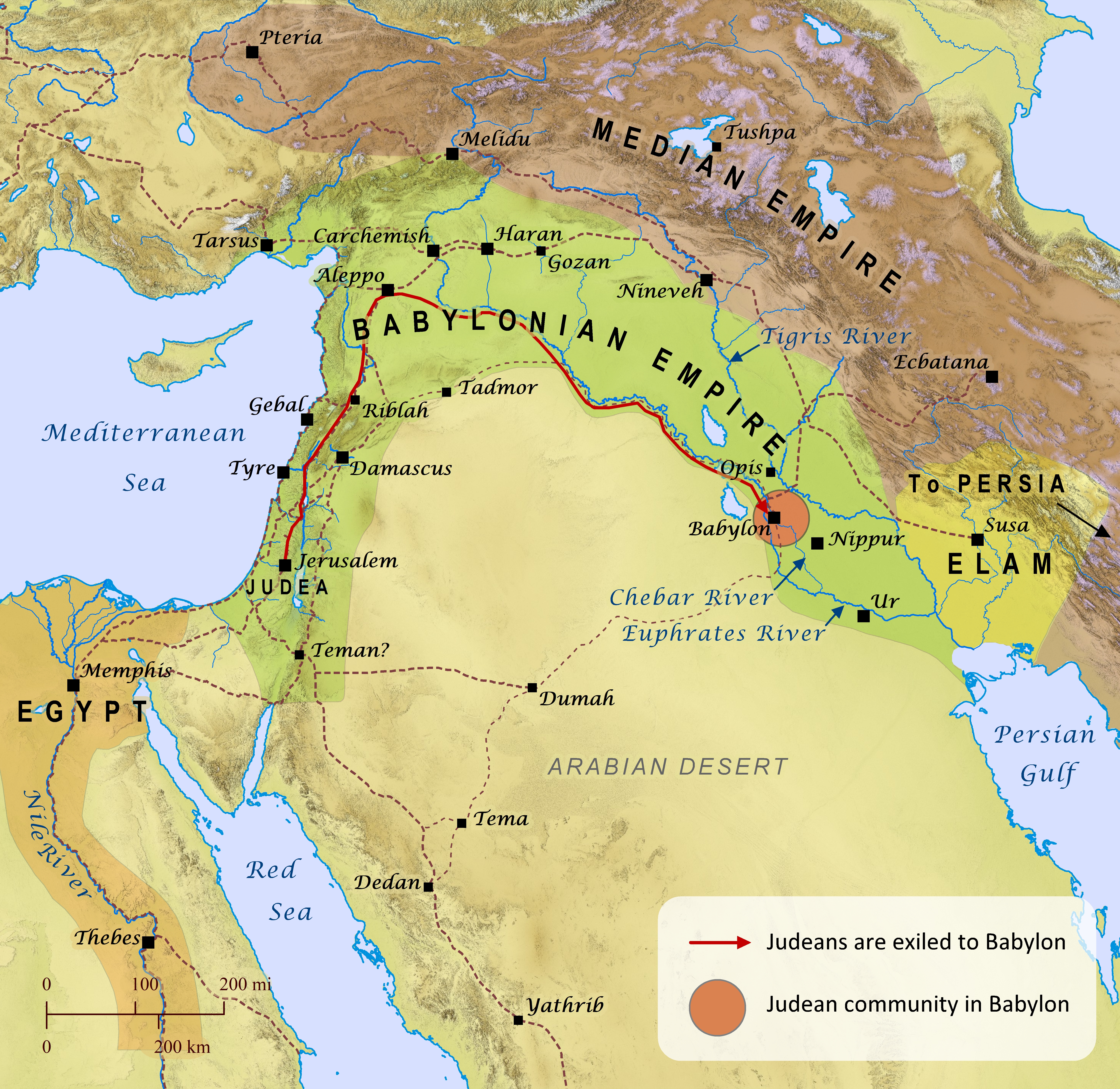Note: This view shows ‘verses’ which are not natural language units and hence sometimes only part of a sentence will be visible—click on any Bible version abbreviation down the left-hand side to see the verse in more of its context. Normally the OET discourages the reading of individual ‘verses’, but this view is only designed as a tool for doing comparisons of different translations—the older translations are further down the page (so you can read up from the bottom to trace the English translation history). The OET segments on this page are still very early looks into the unfinished texts of the Open English Translation of the Bible—please double-check these texts in advance before using in public.
OEB No OEB 2 CHR book available
WEBBE Nebuchadnezzar king of Babylon came up against him, and bound him in fetters to carry him to Babylon.
WMBB (Same as above)
NET King Nebuchadnezzar of Babylon attacked him, bound him with bronze chains, and carried him away to Babylon.
LSV Nebuchadnezzar king of Babylon has come up against him, and binds him in bronze chains to take him away to Babylon.
FBV Then Nebuchadnezzar, king of Babylon, attacked Jehoiakim. He captured him[fn] and put bronze shackles on him, and brought him to Babylon.
T4T Then the army of King Nebuchadnezzar of Babylon attacked Jehoiakim’s army. They captured Jehoiakim and bound him with bronze chains and took him to Babylon.
LEB Nebuchadnezzar the king of Babylon went up against him, and he bound him with bronze fetters to bring him to Babylon.
BBE Nebuchadnezzar, king of Babylon, came up against him, and took him away in chains to Babylon.
Moff Nebuchadnezzar king of Babylon marched against him and shackled him in chains, to carry him off to Babylon.
JPS Against him came up Nebuchadnezzar king of Babylon, and bound him in fetters, to carry him to Babylon.
ASV Against him came up Nebuchadnezzar king of Babylon, and bound him in fetters, to carry him to Babylon.
DRA Against him came up Nabuchodonosor king of the Chaldeans, and led him bound in chains into Babylon.
YLT against him hath Nebuchadnezzar king of Babylon come up, and bindeth him in brazen fetters to take him away to Babylon.
Drby Against him came up Nebuchadnezzar king of Babylon, and bound him with chains of brass to carry him to Babylon.
RV Against him came up Nebuchadnezzar king of Babylon, and bound him in fetters, to carry him to Babylon.
SLT Against him came up Nebuchadnezzar king of Babel, and he will bind him in fetters to cause him to go to Babel.
Wbstr Against him came up Nebuchadnezzar king of Babylon, and bound him in fetters, to carry him to Babylon.
KJB-1769 Against him came up Nebuchadnezzar king of Babylon, and bound him in fetters, to carry him to Babylon.[fn]
KJB-1611 [fn]Against him came vp Nebuchadnezzar King of Babylon, and bound him in fetters to cary him to Babylon.
(Modernised spelling is same as from KJB-1769 above, apart from capitalisation and punctuation and footnotes)
Bshps Against him came vp Nabuchodonosor king of Babylon, and bounde hym with two chaynes, to cary him to Babylon.
(Against him came up Nebuchadnezzar king of Babylon, and bound him with two chains, to carry him to Babylon.)
Gnva Against him came vp Nebuchadnezzar King of Babel, and bounde him with chaines to cary him to Babel.
(Against him came up Nebuchadnezzar King of Babel, and bound him with chains to carry him to Babel. )
Cvdl And Nabuchodonosor the kynge of Babilon wente vp agaynst him, and bounde him with cheynes, to cary him vnto Babilon.
(And Nebuchadnezzar the king of Babylon went up against him, and bound him with chains, to carry him unto Babylon.)
Wycl Nabugodonosor, kyng of Caldeis, styede ayens this Joakym, and ledde hym boundun with chaynes in to Babiloyne.
(Nebuchadnezzar, king of Chaldees, styede against this Yoakym, and led him bound with chains in to Babylon.)
Luth Und Nebukadnezar, der König zu Babel, zog wider ihn herauf und band ihn mit Ketten, daß er ihn gen Babel führete.
(And Nebukadnezar, the/of_the king to/for Babel, pulled against him/it up and band him/it with chains, that he him/it to/toward Babel led.)
ClVg Contra hunc ascendit Nabuchodonosor rex Chaldæorum, et vinctum catenis duxit in Babylonem.
(Contra this_one went_up Nabuchodonosor king Chaldæorum, and bound/tied chains led in/into/on Babylon. )
RP-GNT No RP-GNT 2 CHR book available
